
Does your team actually understand how your business works?
With Runway, they will. We bring all your data and context into one place, connecting everything to a single model. It only takes seconds to imagine “what if” scenarios – just drag a plan to adjust it, and instantly see the impact on all your metrics. Teams at AngelList, Superhuman, and 818 Tequila are already using Runway to create financial clarity.
Learn what happens when everyone stays on the same page.
Here’s a simple framework for determining if your company is ready to go public. It comes from speaking with Amanda Whalen, CFO of Klaviyo, one of the few successful tech IPOs of 2023.
You’re ready when you have demonstrated:
-
Scale: You’ve gotten to a substantial enough size (north of $500m in revenue) to prove you aren’t going anywhere.
-
Proof points: You have evidence that new initiatives for growth are working.
-
Upside: You’re actively planting the seeds for future expansion, so investors will reap the benefits.
Amanda applied this framework to her own company heading into IPO:
“[1] We had gotten to a scale where we clearly were a substantial company. Last year we had close to $700 million in revenue.
We had demonstrated a track record of growth in our core markets. Historically we started out primarily serving retail and e-commerce businesses and serving a lot of small businesses. [2] But we were also starting to see really good traction in the places that we’re going to drive growth going forward.
And for us in our business that was expansion internationally and growth in the mid market.
[3] And then we were just starting to plant the seeds for that future expansion of adding new products and expanding into new verticals.
So it really was from a business perspective the right time where you had that track record, you have the proof points, and you have the runway ahead because investors want to know that you’ve got the demonstrated ability to deliver, but they also want to know that there’s upside so that they can share the upside with you going forward.”
Scale and predictability are the two must-haves constantly drilled into the minds of operators. You need to be “big” and able to “predict” future growth.
But the third point is not discussed enough. Sharing upside with investors is crucial. There has to be some meat left on the bone.
To use a sports analogy, an NFL running back gets to negotiate for a big time contract based on his past performance.
But he gets paid based on the yards the team thinks are still in his legs.

Investors want to know there’s plenty of room for growth going forward. They don’t want to come in and find out you’ve already exhausted every opportunity. They want some runway. They want some upside. They want some juice left to squeeze.
When you tell your equity story – make sure it’s clear you still have yards left in the tank and room to keep running.
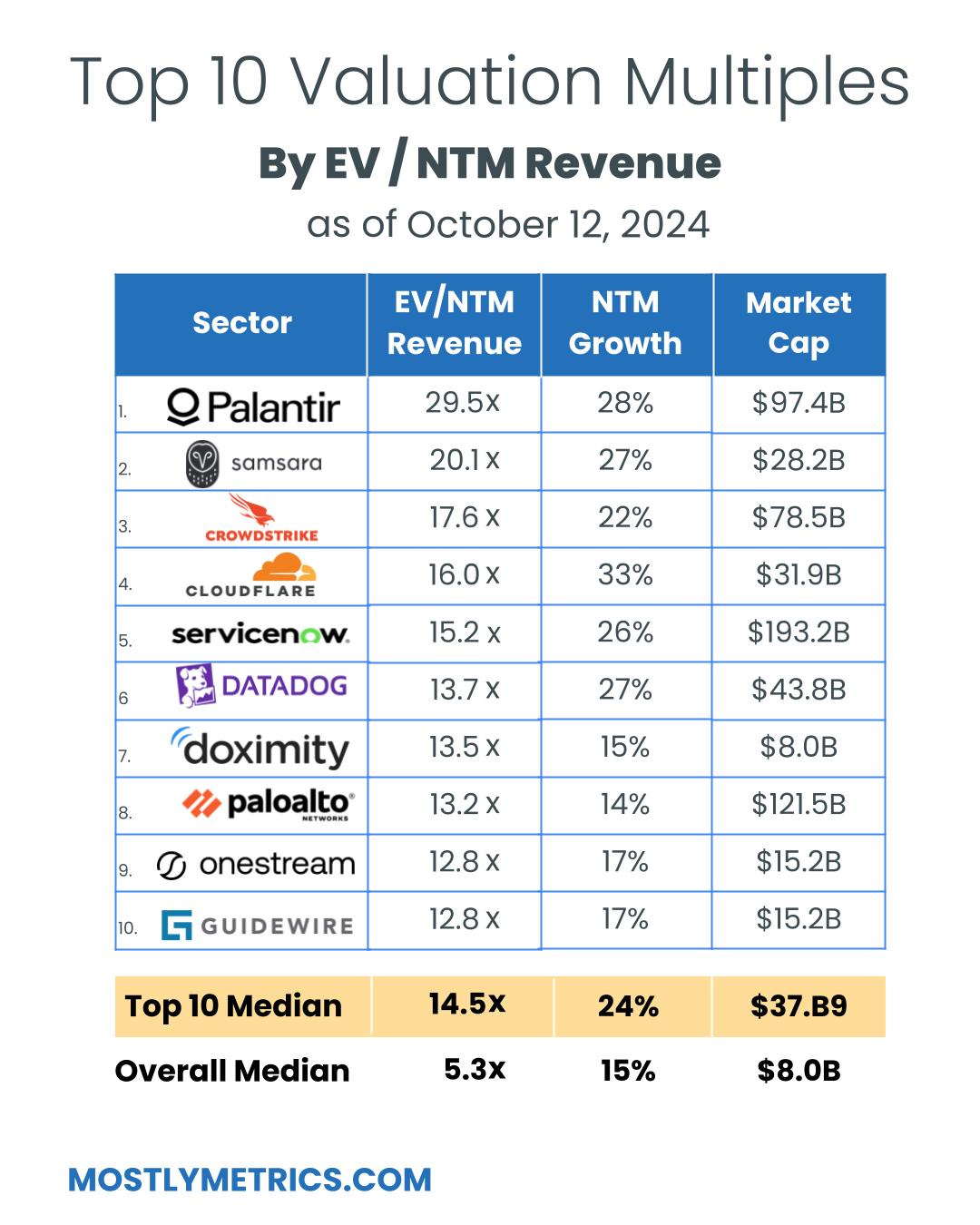
TL;DR: Multiples are UP week-over-week.
Top 10 Medians:
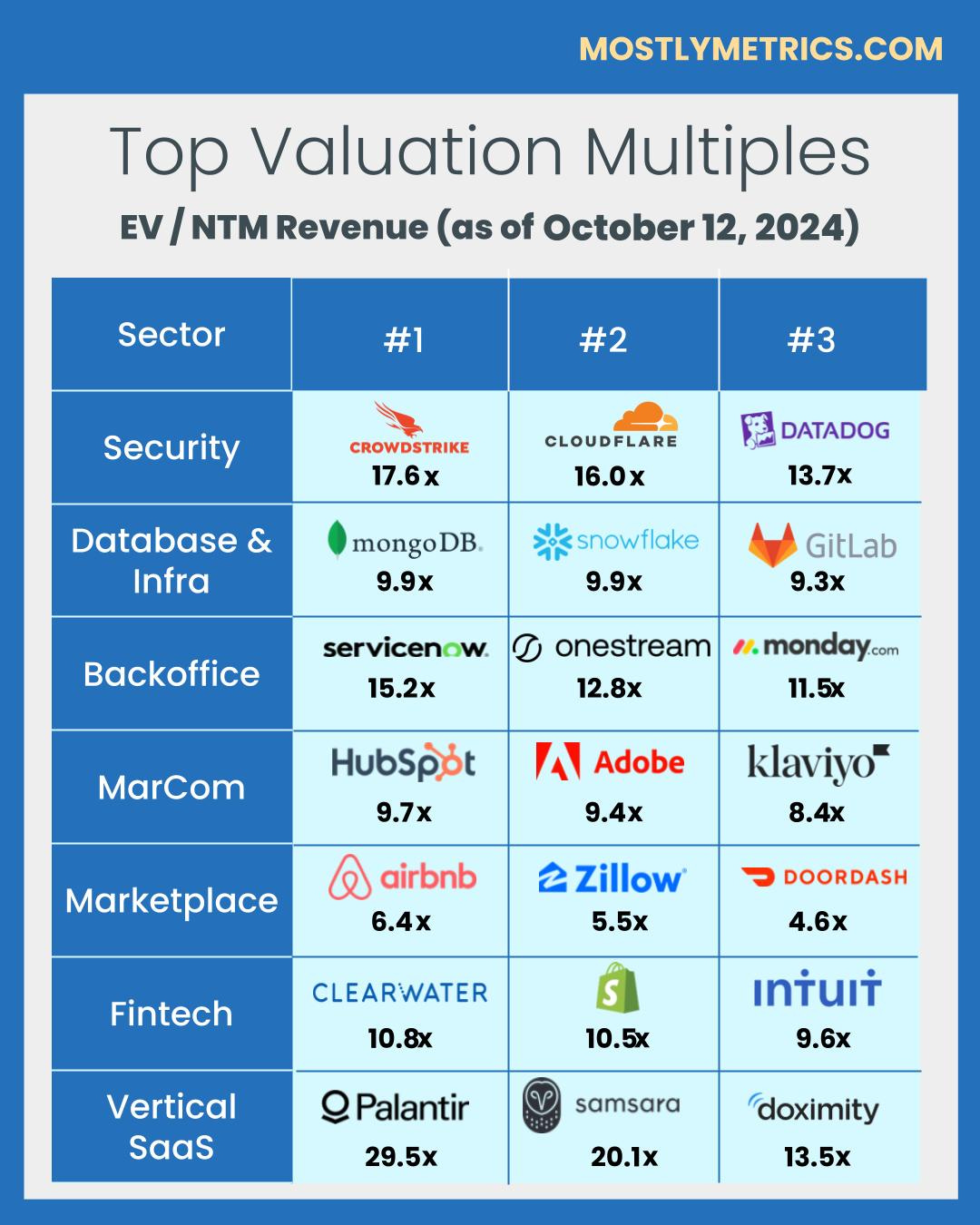
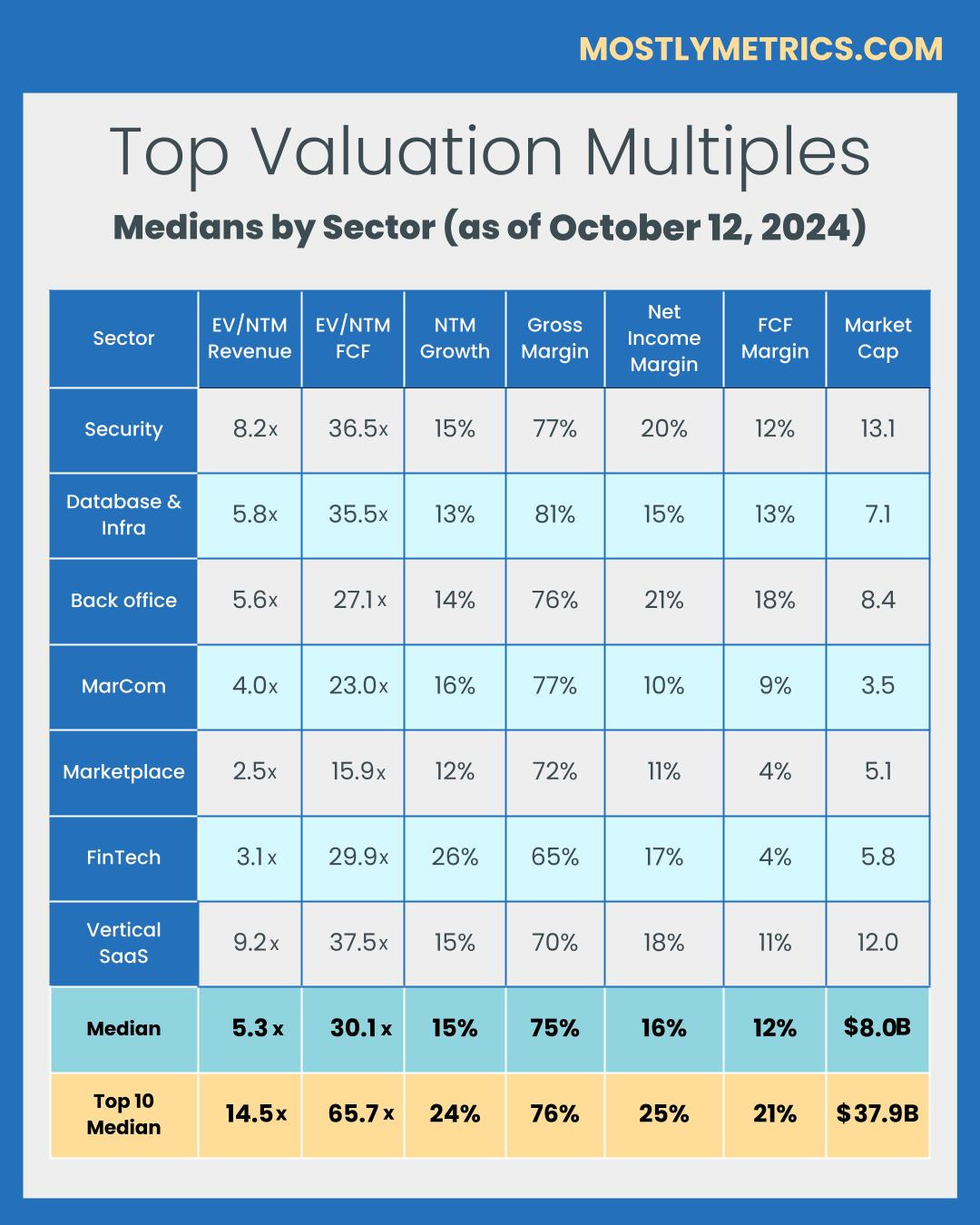
Revenue multiples are a shortcut to compare valuations across the technology landscape, where companies may not yet be profitable. The most standard timeframe for revenue multiple comparison is on a “Next Twelve Months” (NTM Revenue) basis.
NTM is a generous cut, as it gives a company “credit” for a full “rolling” future year. It also puts all companies on equal footing, regardless of their fiscal year end and quarterly seasonality.
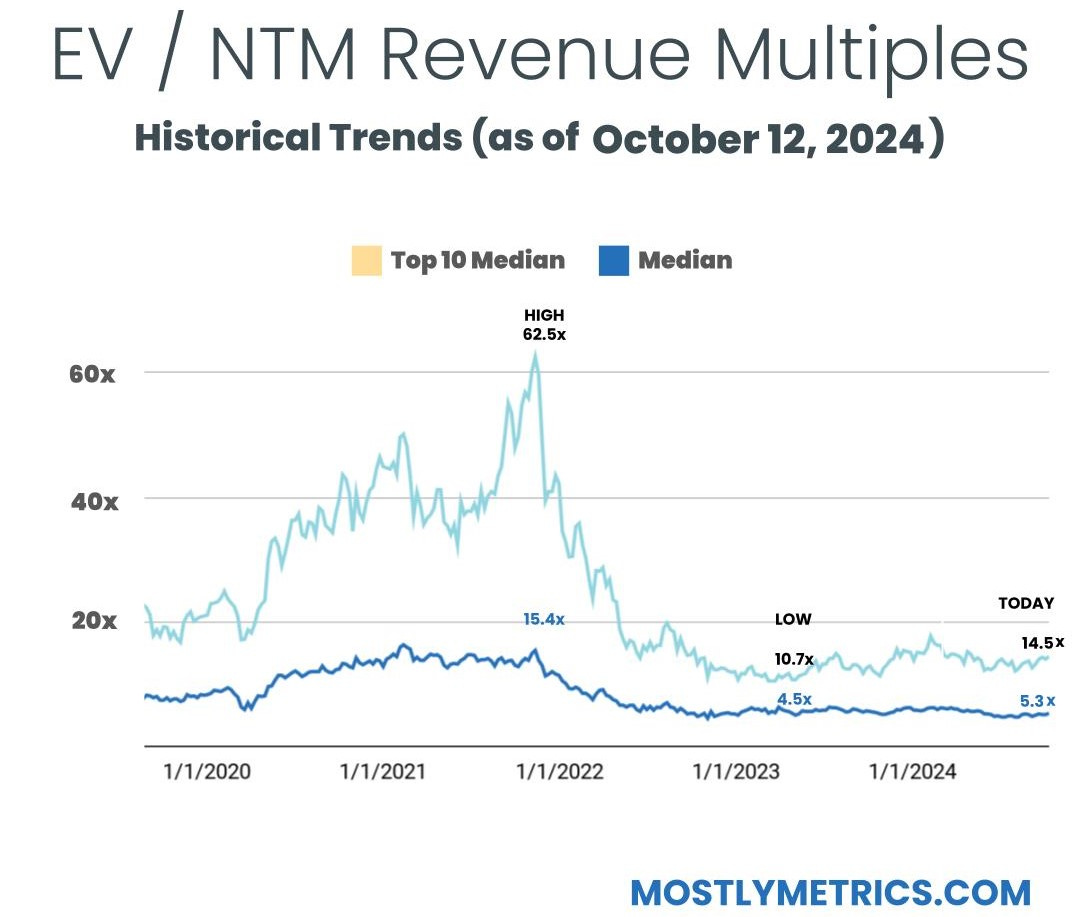
However, not all technology sectors or monetization strategies receive the same “credit” on their forward revenue, which operators should be aware of when they create comp sets for their own companies. That is why I break them out as separate “indexes”.
Reasons may include:
From a macro perspective, multiples trend higher in low interest environments, and vice versa.
Multiples shown are calculated by taking the Enterprise Value / NTM revenue.
Enterprise Value is calculated as: Market Capitalization + Total Debt – Cash
Market Cap fluctuates with share price day to day, while Total Debt and Cash are taken from the most recent quarterly financial statements available. That’s why we share this report each week – to keep up with changes in the stock market, and to update for quarterly earnings reports when they drop.
Historically, a 10x NTM Revenue multiple has been viewed as a “premium” valuation reserved for the best of the best companies.
Companies that can do more with less tend to earn higher valuations.
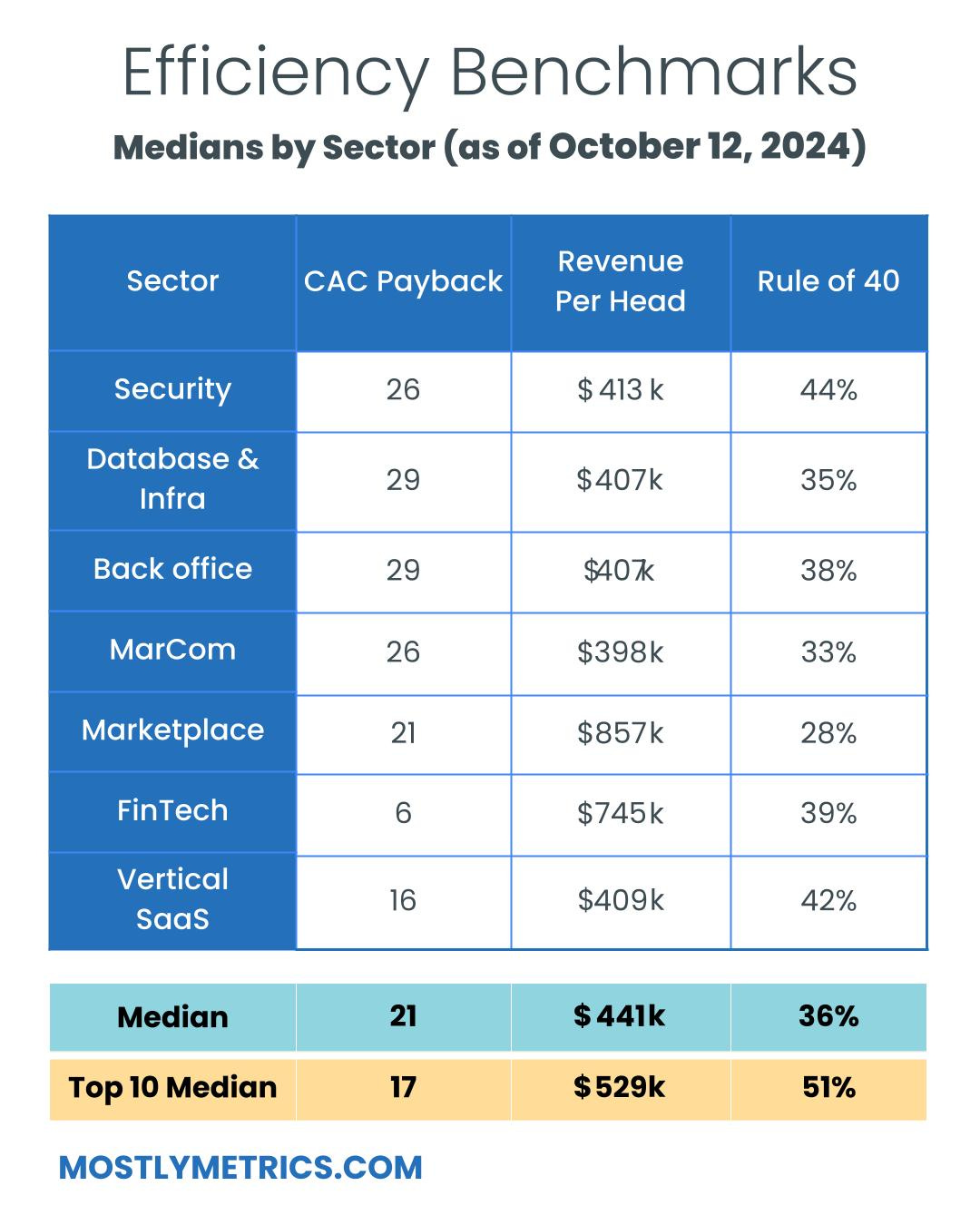
Three of the most common and consistently publicly available metrics to measure efficiency include:
CAC Payback Period is measured as Sales and Marketing costs divided by Revenue Additions, and adjusted by Gross Margin.
Here’s how I do it:
Sales and Marketing costs are measured on a TTM basis, but lagged by one quarter (so you skip a quarter, then sum the trailing four quarters of costs). This timeframe smooths for seasonality and recognizes the lead time required to generate pipeline.
Revenue is measured as the year-on-year change in the most recent quarter’s sales (so for Q2 of 2024 you’d subtract out Q2 of 2023’s revenue to get the increase), and then multiplied by four to arrive at an annualized revenue increase (e.g., ARR Additions).
Gross margin is taken as a % from the most recent quarter (e.g., 82%) to represent the current cost to serve a customer
-
Revenue per Employee: On a per head basis, how much in sales does the company generate each year? The rule of thumb is public companies should be doing north of $450k per employee at scale. This is simple division. And I believe it cuts through all the noise – there’s nowhere to hide.
Revenue per Employee is calculated as: (TTM Revenue / Total Current Employees)
Rule of 40 is calculated as: TTM Revenue Growth % + TTM Adjusted EBITDA Margin %
A few other notes on efficiency metrics:
-
Net Dollar Retention is another great measure of efficiency, but many companies have stopped quoting it as an exact number, choosing instead to disclose if it’s above or below a threshold once a year. It’s also uncommon for some types of companies, like marketplaces, to report it at all.
-
Most public companies don’t report net new ARR, and not all revenue is “recurring”, so I’m doing my best to approximate using changes in reported GAAP revenue. I admit this is a “stricter” view, as it is measuring change in net revenue.
Decreasing your OPEX relative to revenue demonstrates Operating Leverage, and leaves more dollars to drop to the bottom line, as companies strive to achieve +25% profitability at scale.
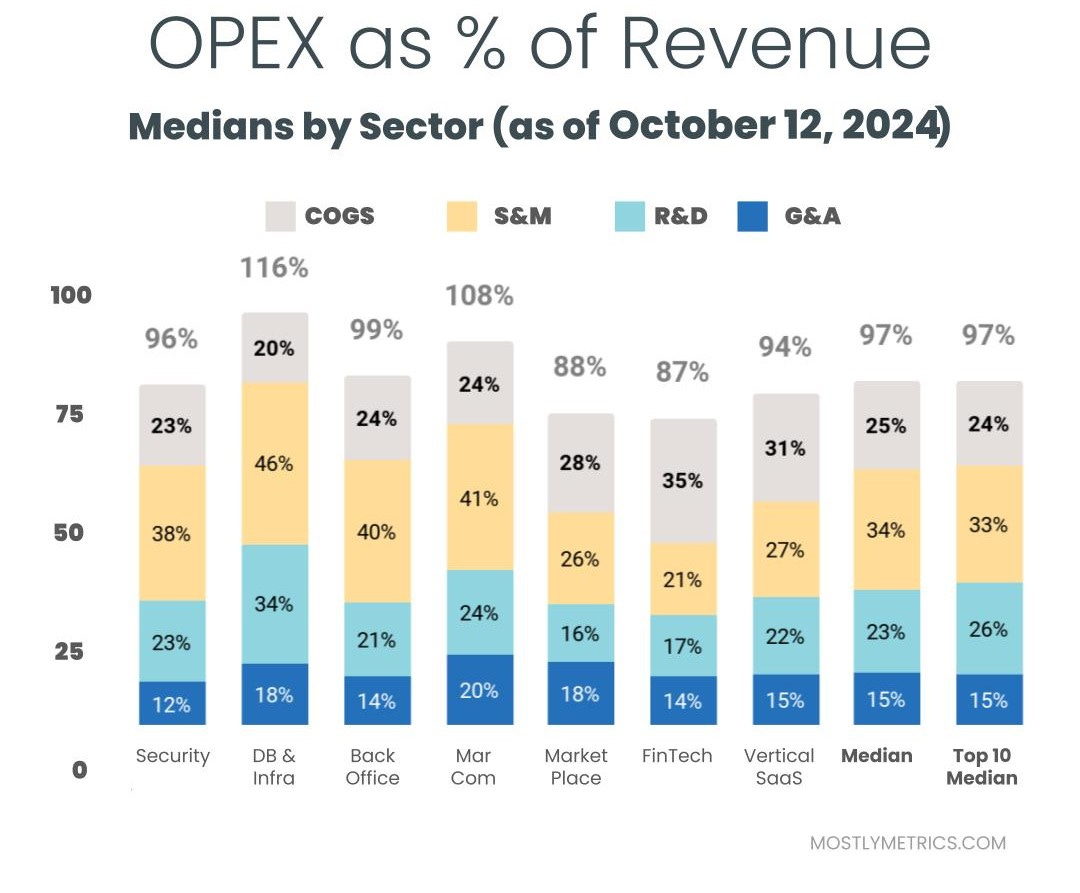
The most common buckets companies put their operating costs into are:
-
Cost of Goods Sold: Customer Support employees, infrastructure to host your business online, API tolls, and banking fees if you are a FinTech.
-
Sales & Marketing: Sales and Marketing employees, advertising spend, demand gen spend, events, conferences, tools
-
Research & Development: Product and Engineering employees, development expenses, tools
-
General & Administrative: Finance, HR, and IT employees… and everything else. Or as I like to call myself “Strategic Backoffice Overhead”
All of these are taken on a Gaap basis and therefore INCLUDE stock based comp, a non cash expense.
Want to build your own comp set?

Upgrade to paid to download the company level workbook.




